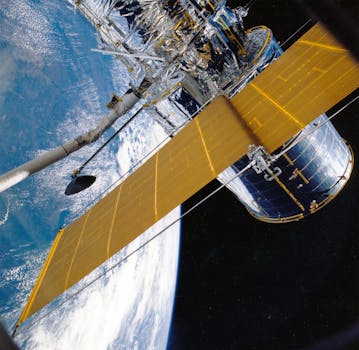
LEO Satellites Revolutionizing Global Connectivity
LEO satellites, or Low Earth Orbit satellites, are a type of satellite that orbits the Earth at an altitude of around 160 to 2,000 kilometers. These satellites have been gaining popularity in recent years due to their ability to provide faster, more reliable, and cost-effective solutions for global connectivity. At the beginning of the LEO satellites era, the focus was on providing internet access to remote and underserved areas, but today, their applications have expanded to include a wide range of services, from communication and navigation to Earth observation and more.
The key advantages of LEO satellites lie in their low latency, high bandwidth, and global coverage. Because they are closer to the Earth’s surface than traditional geostationary satellites, LEO satellites can provide faster data transfer rates and lower latency, making them ideal for real-time applications such as video conferencing, online gaming, and live streaming. Additionally, LEO satellites can offer higher bandwidth than traditional satellites, enabling the transmission of large amounts of data quickly and efficiently.
How LEO Satellites Work
LEO satellites work by orbiting the Earth in a low altitude orbit, typically between 160 and 2,000 kilometers. They are launched into space using a rocket and then released into their orbit, where they begin to transmit and receive data to and from Earth-based stations. The data is transmitted through a radio frequency signal, which is picked up by the satellite and then re-transmitted back to Earth, where it is received by a ground station or a user’s device. LEO satellites use a variety of frequencies, including Ka-band, Ku-band, and C-band, to transmit data, each with its own advantages and disadvantages.
One of the key challenges of LEO satellites is their limited lifespan, which can range from a few years to several decades, depending on the satellite’s design and orbit. As a result, LEO satellite constellations, which are groups of satellites working together to provide continuous coverage, have become increasingly popular. These constellations can provide global coverage, even when individual satellites are no longer operational, and can be easily expanded or upgraded as new satellites are launched.
Applications of LEO Satellites
LEO satellites have a wide range of applications, from communication and navigation to Earth observation and more. Some of the most significant applications include:
Communication: LEO satellites can provide internet access, voice communication, and data transfer services to remote and underserved areas, as well as to areas with limited or no connectivity. They can also be used for emergency response, such as providing communication services during natural disasters or search and rescue operations.
Navigation: LEO satellites can be used for navigation, providing location information and timing signals to GPS devices and other navigation systems. They can also be used for tracking and monitoring assets, such as ships, aircraft, and vehicles.
Earth Observation: LEO satellites can be used for Earth observation, providing high-resolution images of the Earth’s surface, which can be used for a variety of applications, including agriculture, forestry, and disaster response.
Future of LEO Satellites
The future of LEO satellites looks bright, with many companies and organizations investing heavily in the development of new LEO satellite constellations and technologies. One of the most significant trends in the industry is the development of small satellites, which are smaller, lighter, and less expensive than traditional satellites. These satellites can be launched in large numbers, providing global coverage and enabling a wide range of applications, from communication and navigation to Earth observation and more.
Another significant trend is the development of reusable rockets, which can significantly reduce the cost of launching satellites into space. This technology has the potential to make space travel more accessible and affordable, enabling the launch of more satellites and the development of new space-based applications.




